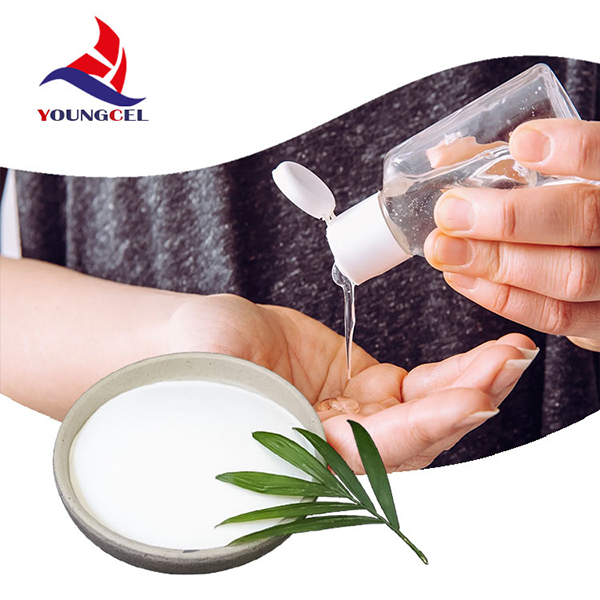The Role of Cellulose Binders in Modern Applications
Cellulose binders have become increasingly important in various industries, ranging from pharmaceuticals to construction. As natural polymers derived from plant cell walls, cellulose and its derivatives are recognized for their versatility, non-toxicity, and biodegradability. These properties make cellulose binders a preferred choice in numerous applications where adhesion, stability, and environmental sustainability are paramount.
One of the most prominent uses of cellulose binders is in the pharmaceutical sector. In the formulation of tablets and capsules, cellulose derivatives like microcrystalline cellulose (MCC) and hydroxypropyl methylcellulose (HPMC) are widely utilized. These binders serve multiple roles they enable the uniform distribution of active ingredients, enhance tablet cohesion, and improve the overall mechanical properties of the formulations. Moreover, cellulose binders contribute to the controlled release of drugs, allowing for sustained therapeutic effects. Their ability to form gels also facilitates the manufacturing of liquid formulations, such as syrups and suspensions, which require thickening agents to achieve the desired viscosity.
In the construction industry, cellulose binders are increasingly being recognized for their contributions to eco-friendly building materials. They can be used in composites, adhesives, and coatings that bind inorganic and organic materials together without compromising structural integrity. Given their renewable origin, cellulose binders are becoming a favored alternative to synthetic binders, aligning with the growing trend toward sustainable construction practices. For instance, cellulose-based adhesives can effectively bond wood, fiber, and other materials, providing strong adhesion while reducing environmental impacts.
cellulose binder

Another critical application of cellulose binders is in the paper and packaging industry. The demand for sustainable packaging solutions has spurred innovations in cellulose-based materials, including biodegradable films and coatings. Cellulose binders enhance the mechanical properties of these materials, improving their resistance to tearing and moisture while remaining environmentally friendly. As companies strive to minimize the use of plastics, cellulose-based options provide a viable solution that meets both consumer demand and regulatory requirements for sustainability.
In the realm of food processing, cellulose binders are utilized to improve the texture and consistency of various food products. For example, carboxymethyl cellulose (CMC) is commonly employed as a thickener and stabilizer in sauces, dressings, and dairy products. It helps retain moisture and improve mouthfeel, contributing to an enhanced eating experience without compromising health. The use of cellulose binders in food applications also addresses consumer concerns about additives, as these compounds are derived from natural sources and are regarded as safe for consumption.
Despite their remarkable properties, cellulose binders are not without challenges. One concern is the variability of cellulose derived from different plant sources, which can impact performance characteristics. To address this, ongoing research is focused on refining extraction and modification processes to produce standardized cellulose derivatives that meet specific industry requirements. Additionally, as industries increasingly shift towards renewable materials, there is a pressing need for innovative approaches to enhance the performance of cellulose binders, making them more competitive with conventional synthetic options.
In conclusion, cellulose binders play a pivotal role across various sectors, including pharmaceuticals, construction, food processing, and packaging. Their natural, biodegradable nature promotes sustainability, while their versatile properties facilitate their usage in numerous applications. As research continues to unlock the potential of cellulose derivatives, it is likely that we will see even broader applications and improved formulations, further solidifying the significance of cellulose binders in modern society. The future promises a shift towards greener alternatives, and cellulose binders are at the forefront of this movement, offering innovative solutions tailored to meet the needs of a sustainable world.
-
A Comprehensive Guide to Methyl Ethyl Hydroxyethyl Cellulose: Applications and Industry InsightsNewsNov.24,2025
-
Understanding Methyl 2 Hydroxyethyl Cellulose: Uses, Benefits & Industry InsightsNewsNov.24,2025
-
Hydroxyethyl Methyl Cellulose HEMC: Industrial Uses, Benefits & Future TrendsNewsNov.23,2025
-
HEMC Cellulose: Versatile & Sustainable Industrial Polymer | YoungcelNewsNov.23,2025
-
Methyl Hydroxyethyl Cellulose: Versatile Building Block for Industry & SustainabilityNewsNov.23,2025
-
CAS 9032 42 2: Understanding Polyvinyl Alcohol's Impact on Industry & SustainabilityNewsNov.22,2025




